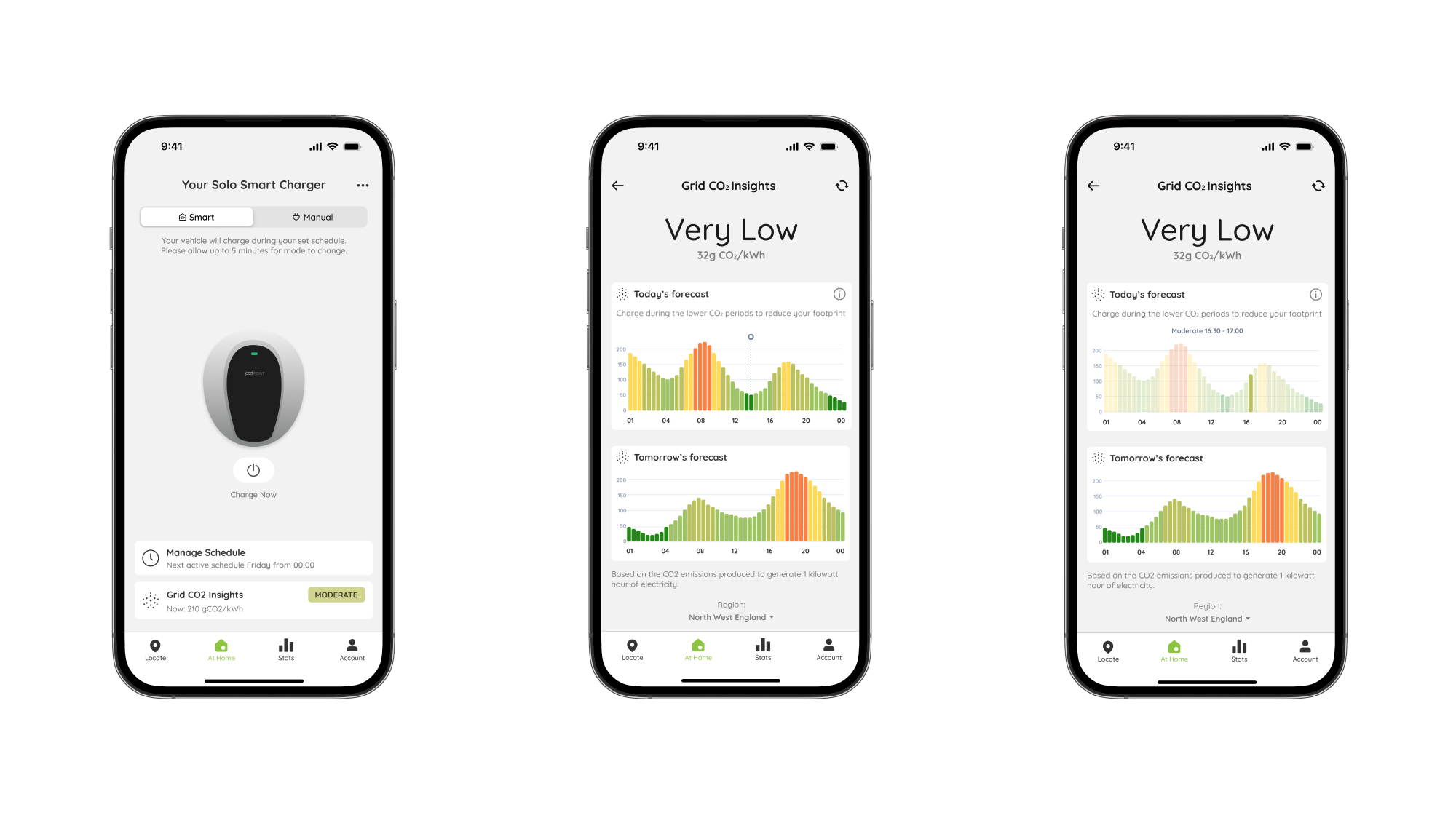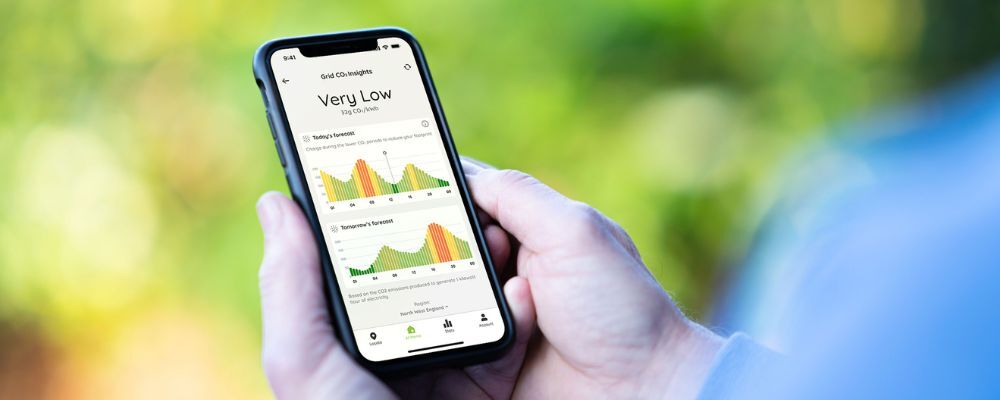
Introducing Grid CO2 Insights
Posted by Jade: Jun 14, 2023 • 5 min read
Our latest feature makes it easier than ever for our customers to make informed decisions on when they charge.
We all know that making the switch to an electric vehicle (EV) has a hugely positive impact on the environment and lowers your carbon footprint. But what if there was more you could do?
With our newest feature, you could go even further by using carbon data to make more informed choices on when to charge your electric car and, if possible, reduce your carbon footprint even more.
What is a “carbon footprint”?
Everyone and everything has one, but what exactly is a “carbon footprint”? In simple terms, it’s the amount of greenhouse gases (GHGs) generated by an action or entity, whether directly or indirectly.
This could be a person doing something specific (like commuting to work), a company’s total emissions across its business, an event (like a music gig), or the manufacturing of a product.
Because carbon dioxide (CO2) is one of the main gases contributing towards climate change, it’s really important for everyone - both individuals and corporations - to do everything they can to reduce their carbon footprint.
Introducing Grid CO2 Insights
For those who do have the flexibility to charge at any time, you’ll be able to use our new Grid CO2 Insights section of the app to make more informed decisions on when the most green time to charge is.
By logging into the Pod Point App, you’ll now be able to see a forecast of your local grid’s carbon intensity, provided by National Grid. Think of it like a weather forecast, but for how high the grid’s carbon emissions are. The lower the intensity, the fewer CO2 emissions the grid is producing to generate electricity.

Using this data, it may be possible to reduce your carbon footprint by charging your EV during periods of predicted low carbon intensity.
So what does this mean for EV drivers?
We understand that not everyone is able to be flexible with when they charge, or that they live in areas where carbon intensity is consistently high, and that’s ok. Simply by going electric and switching to an EV over a petrol or diesel car, you’ve already done a lot to help the planet and lower your footprint!
We’re on a mission to decarbonise transport and help our customers lower their carbon emissions by switching to electric cars. But it’s not enough to simply install chargepoints. It’s also important to implement measures to make charging EVs more eco-friendly.
This new feature shows our commitment to helping our customers cut carbon as much as possible. After all, it’s our mission to stop travel damaging the earth that put us on the charging map, and made us a familiar face in the EV industry.
So if you do live in an area where carbon intensity fluctuates significantly, you can use the new Grid CO2 Insights feature to see when the least carbon intensive times are to charge your EV in your region.

By charging at these low intensity times you can reduce your carbon footprint, as the electricity you’re using to charge is producing fewer CO2 emissions compared to periods of high carbon intensity.
And this is just one of the exciting innovations in our pipeline. Stay tuned for more updates throughout the year as we continue to reshape the future of EV charging.
FAQs
Q. How do I access and use the Grid CO2 Insights feature?
A. To access the Grid CO2 Insights for your region, simply navigate to the ‘At Home’ tab in the Pod Point App. At the bottom of the screen, you’ll be able to see an overview of the current carbon intensity, displayed in grams of CO2 per kilowatt hour (kWh).
Tapping this will show you more detailed information, including the forecast for that day and the next day. You can also see information for a specific time of the day by tapping and holding on any bar on the chart.
If you need to, you can change to a different region using the drop-down menu at the bottom of the screen.
Q. How does the feature affect me if I am on a green tariff?
A. A green energy tariff works by the provider promising to match all or some of the electricity you use with renewable energy. This then feeds back into the National Grid. The more people who sign up to a green tariff, the bigger the percentage of green energy in the national supply.
When you’re on a green tariff, you’ll still get your electricity from the National Grid in the same way as you would with a standard tariff. In other words, your electricity won’t be 100% green.
Good news. Even if you’re on a green tariff, you can still reduce your carbon footprint by charging your car when the grid carbon intensity is lowest, using our new Grid CO2 Insights feature.
Q. How is carbon intensity calculated?
A. Carbon intensity refers to how many grams of CO2 are released to produce one kWh of electricity. In particular, it includes the emissions that relate to electricity generation only - in other words, the emissions from power stations that use fossil fuels, wind and solar generation etc.
Because of this, the grid’s carbon intensity varies throughout the day, depending on what sources of electricity are available. For example, if more solar and wind power is available, the grid’s carbon intensity is lower because it doesn’t need to use as much fossil fuel to generate electricity.
However, it also depends on demand. The more demand there is for electricity, the more fuel is needed to produce it, whether that comes from fossil fuels or renewable sources like wind or solar.
Think about it this way: if everyone drove an EV and plugged in to charge at the exact same time, demand for electricity would surge. How carbon intensive it would be would depend on how much electricity can be generated by renewables at the time.
To stay up to date with the latest chargepoint additions from Pod Point, follow us on Facebook, Twitter, LinkedIn and Instagram for all the latest updates on new chargepoints and more.
